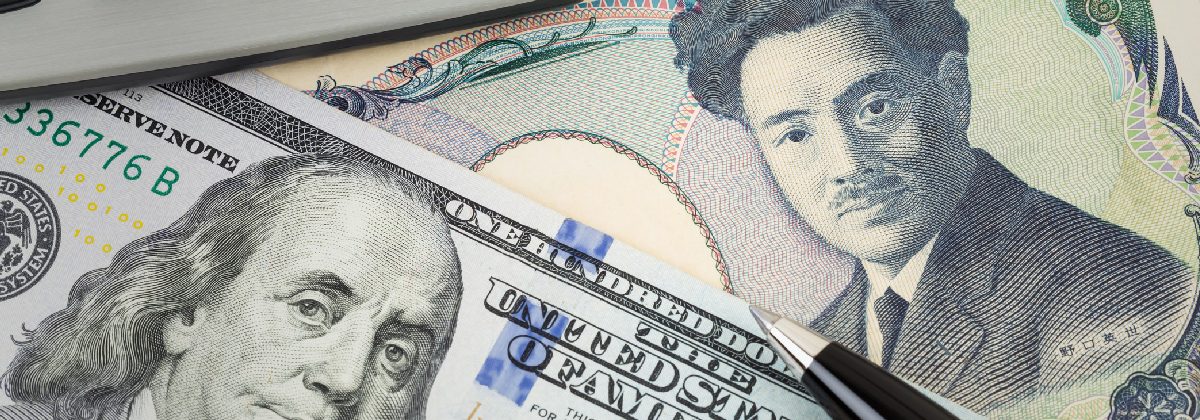USD/JPY Prospects: Interest Rate Differential to Narrow

The Bank of Japan (BoJ) raised its key interest rate to the highest in 17 years to 0.5% in January 2025. This was the second hike, about six months after Japan’s borrowing costs turned positive. Although a hike was expected in the year, it wasn’t expected this soon. BoJ Governor Kazuo Ueda said there is “still quite some distance” between a neutral rate for Japan and the BoJ’s policy rate. This has stirred speculations of further hikes in 2025. The US Fed, on the other hand, has held interest rates steady in the 4.50% to 4.75% range and is expected to keep it that way. The narrowing interest rate differential between the Japanese yen and US dollar is set to disrupt the markets, creating opportunities for USD/JPY traders.
Ueda’s “Neutral Rate”
Understanding the BoJ’s neutral rate and the time horizon in which the central bank decides to achieve neutrality is critical for traders to determine the pace of monetary tightening. This is the rate at which Japan expects sustainable economic growth at a targeted inflation of 2%. According to the BoJ, the inflation rate has been fluctuating between 1% and 2.5%. However, industry experts claim that it will remain closer to 1%. Investors widely expect the BoJ to continue to hike interest rates every six months till the rate reaches 2%. So, analysts see the next hike coming around June-July 2025.
Ueda plans to take a cautious try-and-test approach since identifying a neutral rate in real-time is not possible. He plans to continue to hike rates to check market reaction. He will conclude a neutral rate is reached when housing investment starts to decline. “But we will be gradually testing the waters in finding out,” said the BoJ governor.
Monetary Tightening on the Horizon
Inflation-adjusted wage growth in Japan stood at 0.6% year-on-year in December 2024. This was the result of a 6.8% rise in special payments through wintertime bonuses. This supported nominal pay growth, driving it 4.8% higher on a year-on-year basis. That was after Japanese companies agreed to the biggest salary hike in three decades, at 5.1% on average. Strong wage growth may accelerate economic recovery, according to Prime Minister Shigeru Ishiba. Ueda had claimed that interest rates could be hiked till wages follow and support consumption. The current wage growth level has solidified the BoJ’s hawkish stance, creating an environment suitable to push borrowing costs further up.
Japan’s annual inflation rate surged to 4% in January 2025, from 3.6% in December 2024, while the CPI rose 3.2% y-o-y in January 2025, exceeding market expectations of a 3.1% rise. This was the highest level since June 2023 and highlighted that price pressures in the Japanese economy continue to hold. This indicates that the BoJ may hike interest rates more aggressively than previously expected. The latest data has generated fresh speculations of a rate hike as soon as end-March 2025. Meanwhile, against a backdrop of economic resilience, the Fed may be forced to retain the higher-for-longer stance.
An interest rate hike supports the domestic currency. The BoJ is the only central bank raising interest rates while all others have taken a dovish stance. Consequently, it is the best-performing G10 currency, having surged 5.4% year-to-date by February 25, 2025. However, this is set to change the course of USD/JPY trading.
Impact on USD/JPY and Carry Trading
Japan’s ultra-loose monetary policy benefitted yen carry trades. Traders have used it as a funding currency to buy high-yielding currencies, gaining from negative borrowing costs in Japan and earning from interest rates in the currencies they hold. The USD/JPY is among the most popularly traded forex pairs for carry trading.
In the third week of February 2025, USD/JPY had already lost 700 pips from its mid-January high and was trading just above 151.00, the key support level of the Fibonacci Retracement indicator. Any further pressure is expected to push it to a retracement level of 149.00 due to a combined impact of the BoJ’s January interest rate hike and the delay in tariff enforcement by the Trump administration.
These are set to create tremendous volatility in the Japanese yen, which may appreciate against the greenback. If the pair falls below the 151 level, the bearish momentum in the pair’s price will intensify, indicating the unwinding of the carry trading strategy. With the yen losing its status as the go-to currency for carry trade, the USD/JPY trading strategy may need to be revamped.
This may also drive traders to other currencies, such as the MXN, ZAR and TRY, which offer more favourable interest rate differentials. This may lower the demand for the JPY, weighing on its price.
Trading the Volatility
Experienced traders popularly use derivative instruments, such as contracts for difference (CFDs) for forex trading. CFDs allow you to take advantage of rising and falling USD/JPY prices, enhancing the number of opportunities you can explore. CFDs are often traded on margin, which amplifies your purchasing power. However, traders using margin must be cautious while using leverage as it amplifies profit and loss potential alike. Therefore, risk management is critical when trading forex using CFDs.
To Sum Up
- The BoJ raised the Japanese interest rate to 0.5% in January 2025.
- The Fed has decided to hold interest rates at current level for longer.
- The narrowing rate differential between the USD and JPY may affect carry trading strategies.
- Traders can utilise CFDs to take advantage of the volatility in the yen.
- CFDs are traded on margin, which makes risk management critical.
Disclaimer:
All data, information and materials are published and provided “as is” solely for informational purposes only, and is not intended nor should be considered, in any way, as investment advice, recommendations, and/or suggestions for performing any actions with financial instruments. The information and opinions presented do not take into account any particular individual’s investment objectives, financial situation or needs, and hence does not constitute as an advice or a recommendation with respect to any investment product. All investors should seek advice from certified financial advisors based on their unique situation before making any investment decisions in accordance to their personal risk appetite. Blackwell Global endeavours to ensure that the information provided is complete and correct, but make no representation as to the actuality, accuracy or completeness of the information. Information, data and opinions may change without notice and Blackwell Global is not obliged to update on the changes. The opinions and views expressed are solely those of the authors and analysts and do not necessarily represent that of Blackwell Global or its management, shareholders, and affiliates. Any projections or views of the market provided may not prove to be accurate. Past performance is not necessarily an indicative of future performance. Blackwell Global assumes no liability for any loss arising directly or indirectly from use of or reliance on such information here in contained. Reproduction of this information, in whole or in part, is not permitted.




